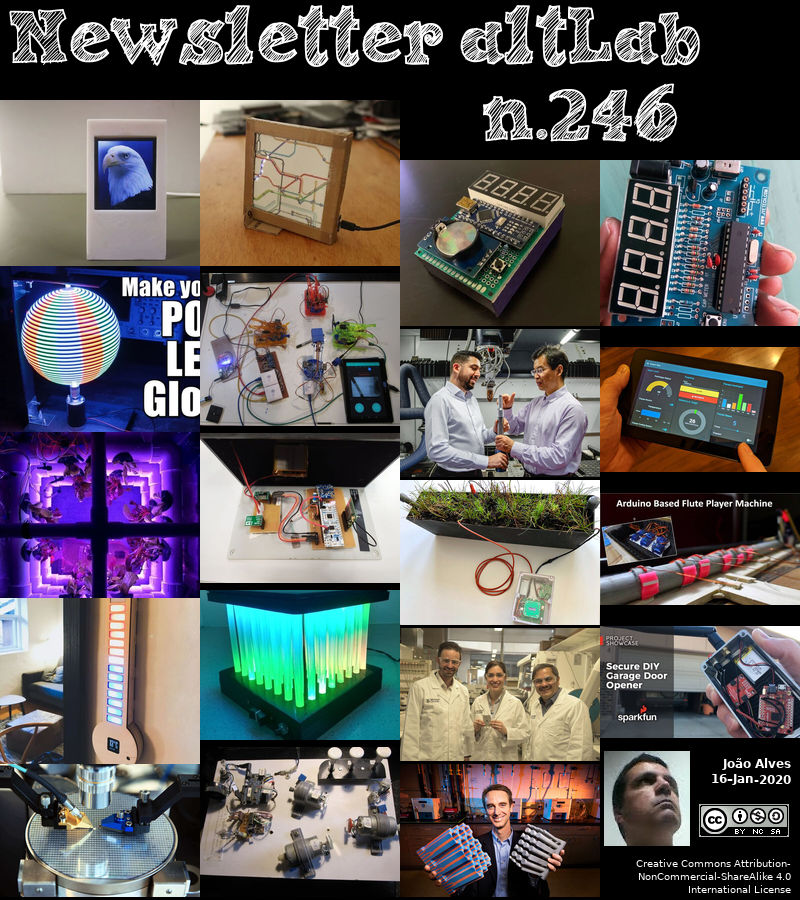2020-01-16 - Nº 246
Editorial
Esta é a Newsletter Nº 246 que se apresenta com o mesmo formato que as anteriores. Se gostar da Newsletter partilhe-a!
Todas as Newsletters encontram-se indexadas no link.
Esta Newsletter tem os seguintes tópicos:
Faz hoje anos que nascia Anders Gustaf Ekeberg. Este químico sueco, nascido em 1767, foi responsável pela descoberta do Tântalo. Em 1853 nascia André Jules Michelin. Este industrial francês é o fundador da Michelin e conjuntamente com o seu irmão Édouard criaram os primeiros pneus de bicicleta e automóvel que podiam ser facilmente removidos para reparação.
Nesta semana que passou ficámos a saber que um homem que sofreu um acidente e ficou paralisado da cintura para baixo conseguiu completar a maratona graças à utilização de um exo-esqueleto. Nesta sua segunda tentativa o homem, Adam Gorlitsky, conseguiu completar a maratona em 33 horas, 50 minutos e 23 segundos.
Nesta semana que passou ficámos também a conhecer a nova tecnologia que está a ser desenvolvida pela Mojo Vision. Trata-se de uma lente de contacto com realidade aumentada incorporada. O desenho desta lente possibilita a colocação de informação sobreposta directamente junto ao olho. Trata-se ainda de um prototipo mas a ideia é bastante interessante.
Na Newsletter desta semana apresentamos diversos projetos de maker.
 João Alves ([email protected])
João Alves ([email protected])
O conteúdo da Newsletter encontra-se sob a licença  Creative Commons Attribution-NonCommercial-ShareAlike 4.0 International License.
Creative Commons Attribution-NonCommercial-ShareAlike 4.0 International License.
Novidades da Semana

Paralyzed man breaks world record for finishing a marathon in an exoskeleton suit
"A South Carolina man competing in the 2020 Charleston Marathon has beaten the world record for the fastest time to finish a marathon in an exoskeleton suit. Adam Gorlitsky, who is paralyzed from the waist down, completed Saturday's 26.2-mile race with a time of 33 hours, 50 minutes and 23 seconds, Cory Michel, one of the organizers of the Charleston Marathon, told CNN. The current record holder is British man Simon Kindleysides, who finished the 2018 London Marathon in 36 hours and 46 minutes, according to Guinness World Records. Guinness has not certified Gorlitsky's race results, which Gorlitsky said he plans to submit to the organization Monday. Gorlitsky started walking the race Thursday night and finished Saturday morning, without taking any breaks for sleep. It was Gorlitsky's second marathon attempt." [...]
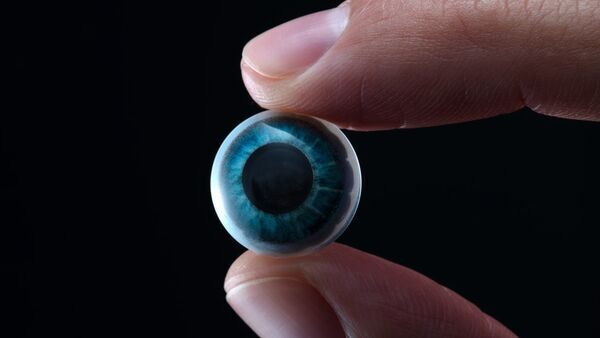
The making of Mojo, AR contact lenses that give your eyes superpowers
"When I looked into the user interface of Mojo Vision’s augmented reality contact lenses, I didn’t see anything at first except the real world in front of me. Only when I peeked over toward the periphery did a small yellow weather icon appear. When I examined it more closely, I could see the local temperature, the current weather, and some forecast information. I looked over to the 9 o’clock position and saw a traffic icon that gave way to a frontal graphic showing potential driving routes on a simple map. At 12 o’clock, I found my calendar and to-do information. At the bottom of my view was a simple music controller." [...]
Outras Notícias
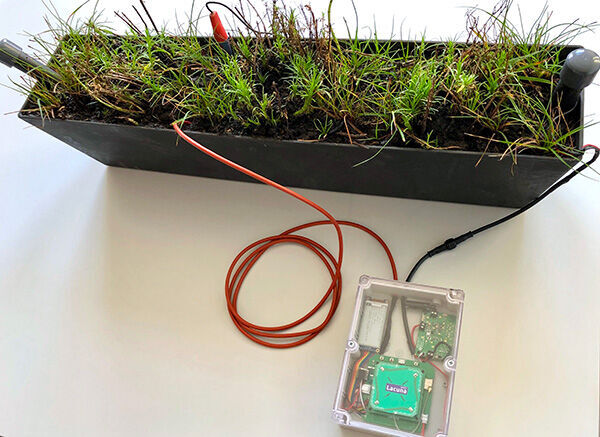
First plant-powered IoT sensor sends signal to space
"Plant-e and Lacuna Space combine bio- and space technology for Internet of Things devices The first-ever plant-powered sensor has successfully transmitted to a satellite in space. The pilot service, using plants as the energy source, has been developed by Plant-e and Lacuna Space. Because the sensor doesn’t need batteries, due to the internal storage in the system, it’ll reduce cost, maintenance requirements and environmental impact. As long as plants continue to grow, electricity will be produced. Combining the innovative energy harvesting technology developed by Plant-e with the extremely power efficient devices from Lacuna Space, these devices are completely self-sustainable and operate independent from sunlight, day and night. The Internet of Things (IoT) prototype device, developed by the two companies, uses the electricity generated by living plants to transmit LoRa® messages about air humidity, soil moisture, temperature, cell voltage and electrode potential straight to Lacuna’s satellite." [...]
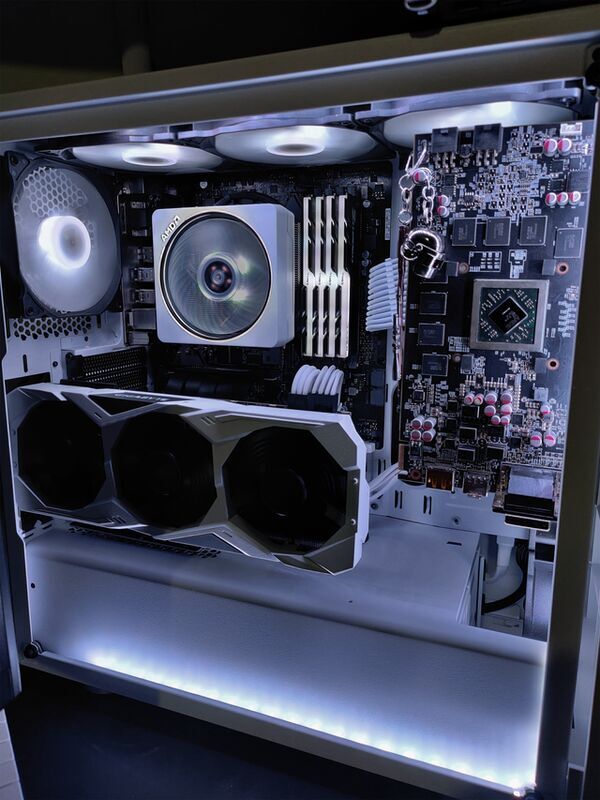
2nd Generation AMD EPYC™ processors in new Atos supercomputer aim to reduce impact of severe weather events
"AMD today announced that its EPYC processors have been selected by the European Centre for Medium-Range Weather Forecasts (ECMWF) to accelerate its new world-leading supercomputer, based on Atos’s latest BullSequana XH2000 technology, for one of the most powerful meteorological supercomputers in the world. Once operational in 2021, the supercomputer will allow ECMWF to run its predictions at a higher resolution, of around 10km, offering reliable, advanced numerical predictions about the occurrence and intensity of extreme weather events ahead of time. “By leveraging our high-performance AMD EPYC server processors, the Atos supercomputer can enable significant improvements in weather forecasting, helping to increase the accuracy of weather predictions around the world,” said Forrest Norrod, Senior Vice President and General Manager, Data Center and Embedded Solutions Business Group. “The real-time data powered by AMD EPYC and delivered by the supercomputer at ECMWF has the potential to decrease the impact of severe weather events on peoples’ lives.” The increase in ECMWF’s computing power, with the industry leading core count of the AMD EPYC™ 7742, will support hundreds of researchers from over 30 countries across Europe in their work on medium and long-range weather forecasting. “We’re really delighted to have been selected by ECMWF for this major contract. This is testament not only to our solid expertise and operational excellence needed to install, manage and run such a large system, but also to the best-of-breed technology which we are supplying, with our BullSequana XH2000 and our partners AMD, Mellanox and DDN,” said Sophie Proust, Atos Group CTO." [...]
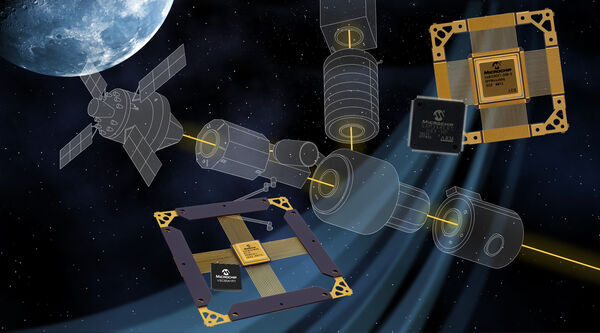
Microchip Announces Industry’s First Space-Qualified COTS-Based Radiation-Tolerant Ethernet Transceiver and Embedded Microcontroller
"Ethernet is becoming more common in spacecraft to enable hardwired communication speed, support higher data rates, and facilitate interoperability between satellites and other spacecraft. As Ethernet in space applications continues to expand, Microchip Technology Inc. (Nasdaq: MCHP) today announced the industry’s first space-qualified Ethernet transceiver – a radiation-tolerant device based on a Commercial Off-the-Shelf (COTS) solution widely deployed in other industries now offering reliable performance for applications ranging from launch vehicles to satellite constellations and space stations. In addition to Microchip’s new VSC8541RT radiation-tolerant Ethernet transceiver sampling, the company received final qualification for the new SAM3X8ERT radiation-tolerant microcontroller, its latest Arm® Cortex®-M3 core processor and embedded Ethernet controller. These are designed to support space industry demand for radiation tolerant devices separately or in combination. Both devices are COTS-based parts with enhanced characterized levels of radiation performance and high reliability quality flow, available in plastic and ceramic packages. They share the same pin-out distribution, allowing designers to begin implementation with COTS devices before moving to space-grade components." [...]

STMicroelectronics Adds Powerful Features and STM32Cube Convenience to TouchGFX Software Framework
"STMicroelectronics has added new features to the TouchGFX software framework for STM32 microcontrollers (MCUs), streamlining creation of attention-grabbing user interfaces for domestic appliances, home automation, industrial controls, medical devices, and wearables. The latest version introduces TouchGFX Generator to make setting up a project and configuring related peripherals easier than ever. This plugin to the STM32CubeMX initialization tool generates a custom project based on the latest STM32Cube firmware and the user’s selected graphic settings and development environment (IDE). STM32CubeIDE and leading third-party IDEs are supported. As the main tool for developing the TouchGFX hardware abstraction layer (TouchGFXHAL) that connects the TouchGFX application with the MCU hardware, TouchGFX Generator reduces reliance on the user’s understanding of the TFT display and enables a wider variety of developers to create sophisticated STM32 graphics. TouchGFX Designer, the PC-based environment for creating, managing, and building graphic applications, adds enhancements that ease navigation, adjustment of settings, and code-version control." [...]
Ciência e Tecnologia
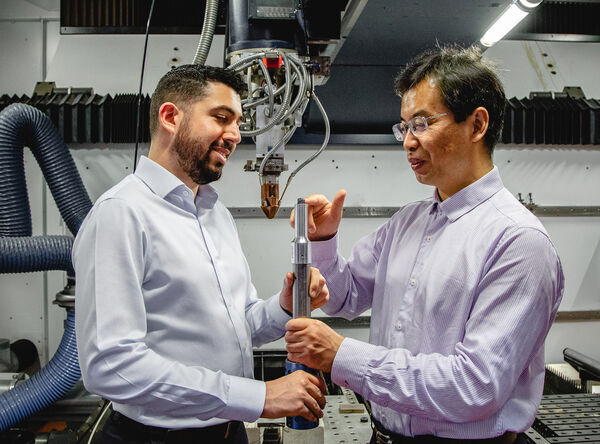
Ultrasound can help make 3D-printed alloys stronger
"Researchers have used sound vibrations to shake metal alloy grains into tighter formation during 3D printing. A new study shows high frequency sound waves can have a significant impact on the inner micro-structure of 3D printed alloys, making them more consistent and stronger than those printed conventionally. Lead author and PhD candidate from RMIT University’s School of Engineering, Carmelo Todaro, said the promising results could inspire new forms of additive manufacturing. “If you look at the microscopic structure of 3D printed alloys, they’re often made up of large and elongated crystals,” Todaro explained. “This can make them less acceptable for engineering applications due to their lower mechanical performance and increased tendency to crack during printing.” “But the microscopic structure of the alloys we applied ultrasound to during printing looked markedly different. The alloy crystals were very fine and fully equiaxed, meaning they had formed equally in all directions throughout the entire printed metal part.” Testing showed these parts were also stronger: they had a 12% improvement in tensile strength and yield stress compared to those made through conventional additive manufacturing." [...]
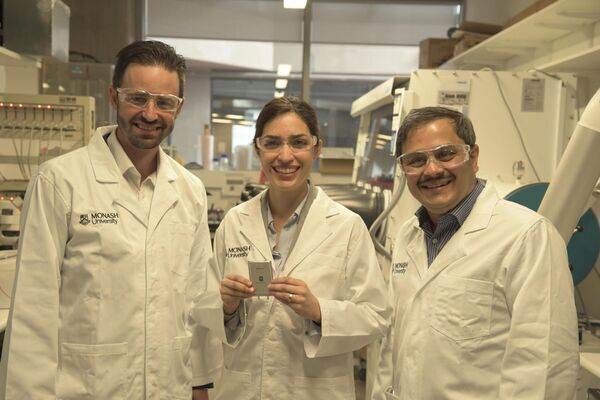
Supercharging tomorrow: Australia first to test new lithium batteries
"Imagine having access to a battery, which has the potential to power your phone for five continuous days, or enable an electric vehicle to drive more than 1000km without needing to “refuel”. Monash University researchers are on the brink of commercialising the world’s most efficient lithium-sulphur (Li-S) battery, which could outperform current market leaders by more than four times, and power Australia and other global markets well into the future. Dr Mahdokht Shaibani from Monash University’s Department of Mechanical and Aerospace Engineering led an international research team that developed an ultra-high capacity Li-S battery that has better performance and less environmental impact than current lithium-ion products. The researchers have an approved filed patent (PCT/AU 2019/051239) for their manufacturing process, and prototype cells have been successfully fabricated by German R&D partners Fraunhofer Institute for Material and Beam Technology. Some of the world’s largest manufacturers of lithium batteries in China and Europe have expressed interest in upscaling production, with further testing to take place in Australia in early 2020. The study was published in Science Advances on Saturday, 4 January 2020 – the first research on Li-S batteries to feature in this prestigious international publication." [...]

How to verify that quantum chips are computing correctly
"A new method determines whether circuits are accurately executing complex operations that classical computers can’t tackle. In a step toward practical quantum computing, researchers from MIT, Google, and elsewhere have designed a system that can verify when quantum chips have accurately performed complex computations that classical computers can’t. Quantum chips perform computations using quantum bits, called “qubits,” that can represent the two states corresponding to classic binary bits — a 0 or 1 — or a “quantum superposition” of both states simultaneously. The unique superposition state can enable quantum computers to solve problems that are practically impossible for classical computers, potentially spurring breakthroughs in material design, drug discovery, and machine learning, among other applications. Full-scale quantum computers will require millions of qubits, which isn’t yet feasible. In the past few years, researchers have started developing “Noisy Intermediate Scale Quantum” (NISQ) chips, which contain around 50 to 100 qubits." [...]
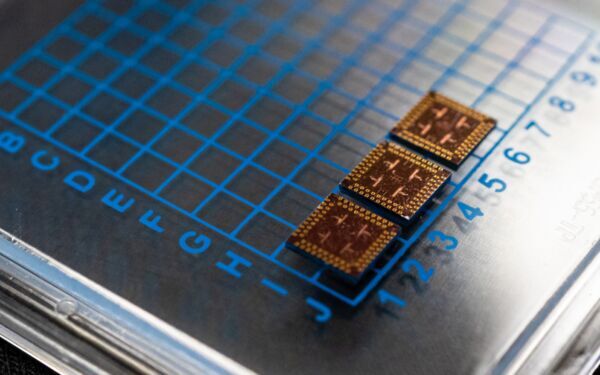
Memory storage for super cold computing
"Scientists at the Department of Energy’s Oak Ridge National Laboratory have experimentally demonstrated a novel cryogenic, or low temperature, memory cell circuit design based on coupled arrays of Josephson junctions, a technology that may be faster and more energy efficient than existing memory devices. If successfully scaled, this type of cryogenic memory array could advance a variety of applications including quantum and exascale computing. “In our design, we have attempted a fundamentally different path that employs small, inductively coupled arrays of Josephson junctions,” said Yehuda Braiman of ORNL’s Computational Sciences and Engineering Division. “If scaled, such memory cell arrays could be orders of magnitude faster than existing memories while consuming very little power.” The cells are designed to operate in super cold temperatures and were tested at just 4 Kelvin above absolute zero, about minus 452 degrees Fahrenheit. In conditions this cold, atoms slow down and certain materials lose resistance to the flow of electricity, becoming superconductors. Because superconductors have no resistance to electrical flow, they lose an almost negligible amount of energy as heat." [...]
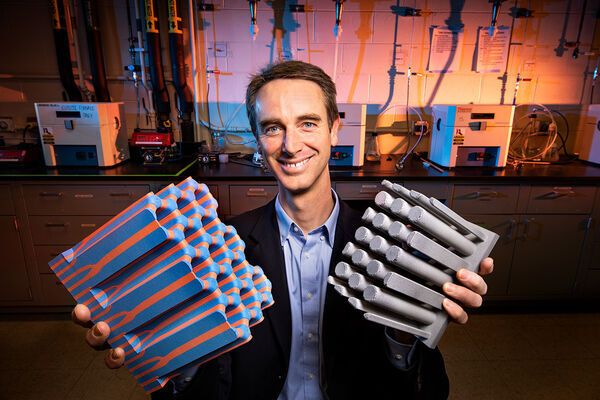
Researchers gain control over internal structure of self-assembled composite materials
"Composites made from self-assembling inorganic materials are valued for their unique strength and thermal, optical and magnetic properties. However, because self-assembly can be difficult to control, the structures formed can be highly disordered, leading to defects during large-scale production. Researchers at the University of Illinois and the University of Michigan have developed a templating technique that instills greater order and gives rise to new 3D structures in a special class of materials, called eutectics, to form new, high-performance materials. The findings of the collaborative study are published in the journal Nature. Eutectic materials contain elements and compounds that have different melting and solidification temperatures. When combined, however, the composite formed has single melting and freezing temperatures – like when salt and water combine to form brine, which freezes at a lower temperature than water or salt alone, the researchers said." [...]
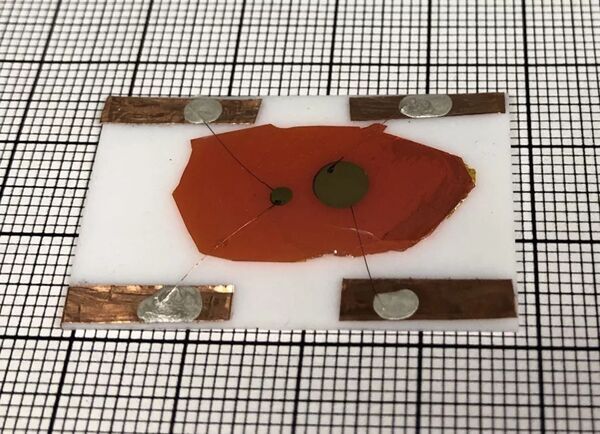
Scientists pioneer new generation of semiconductor neutron detector
"Scientists discover new neutron-detecting material for applications in science and national security. Whether you are trying to detect a possible radiation signature from a suspicious package or vehicle, or you are measuring power output in a nuclear reactor, being able to detect neutrons efficiently and precisely represents a significant challenge. Most neutron detectors work based on one of two different technologies. Some, like those based on helium, are gas-filled. Others, like those based on lithium or boron, involve scintillators that take absorbed neutrons and emit light in response. In neither case are neutrons converted to electrical current and thus a directly readable signal." [...]
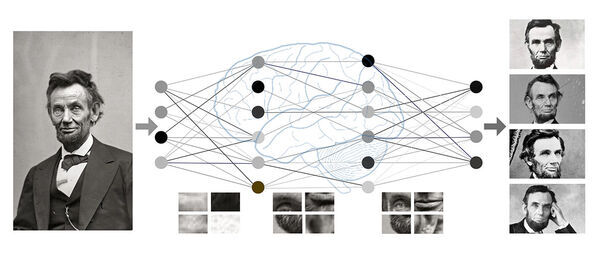
Reinventing the Computer: Brain-Inspired Computing for a Post-Moore’s Law Era
"Since the invention of the transistor in 1947, computing development has seen a consistent doubling of the number of transistors that can fit on a chip. But that trend, known as Moore’s Law, may reach its limit as components of submolecular size encounter problems with thermal noise, making further scaling impossible. In their paper published this week in Applied Physics Reviews, from AIP Publishing, authors Jack Kendall, of Rain Neuromorphics, and Suhas Kumar, of Hewlett Packard Labs, present a thorough examination of the computing landscape, focusing on the operational functions needed to advance brain-inspired neuromorphic computing. Their proposed pathway includes hybrid architectures composed of digital architectures, alongside a resurgence of analog architectures, made possible by memristors, which are resistors with memory that can process information directly where it is stored. “The future of computing will not be about cramming more components on a chip but in rethinking processor architecture from the ground up to emulate how a brain efficiently processes information,” Kumar said. “Solutions have started to emerge which replicate the natural processing system of a brain, but both the research and market spaces are wide open,” Kendall added." [...]

“Universal Memory” research passes new milestone
"“Universal memory” was widely considered to be unachievable – until now Physicists at Lancaster University have demonstrated how their invention of a new type of memory device could transform the way computers, smartphones and other gadgets work. "Universal memory" is, in essence, a memory where the data is very robustly stored, but can also easily be changed; something that was widely considered to be unachievable – until now. Currently, the two main types of memory, dynamic RAM (DRAM) and flash, have complementary characteristics and roles. DRAM is fast, so used for active (working) memory but it is volatile, meaning that information is lost when power is removed. Indeed, DRAM continually ‘forgets’ and needs to be constantly refreshed. Flash is non-volatile, allowing you to carry data in your pocket, but is very slow." [...]
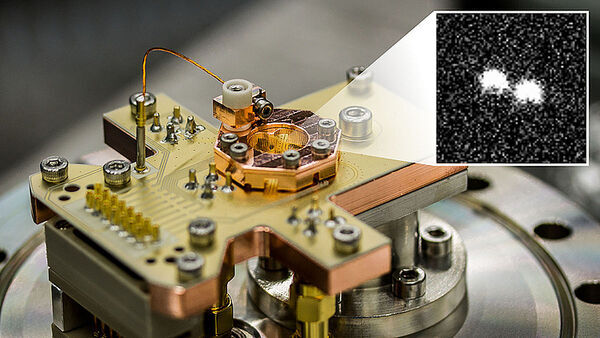
Robust Operations for Quantum Computers
"New approach for controlling qubits via microwave pulses reduces error rates and increases efficiency A functional quantum computer is one of the most intriguing promises of quantum technology. With significantly increased computing power, quantum computers will be able to solve tasks that conventional computers cannot handle, such as understanding and inventing new materials or pharmaceuticals as well as testing the limits of cryptographic techniques. Like in conventional computers, the term quantum bit or qubit refers to the basic unit in quantum information. Presently, the most advanced approaches for realising them are superconducting circuits and trapped ions. The former stores quantum information in electronic components, the latter in different energy levels of single atoms. By using superconducting circuits, researchers recently succeeded in demonstrating that quantum computers are able to perform highly specialised tasks that conventional computers cannot handle." [...]

EPFL spin-off's tiny robots turn heads in Las Vegas
"Yesterday evening, tiny robots developed by EPFL spin-off Foldaway Haptics were the center of attention at the Consumer Electronics Show in Las Vegas. The 33 “bionic flaps,” installed on a concept car from German manufacturer Mercedes-Benz, moves bodywork parts in response to the driver’s decisions and interacts with the public. Las Vegas may be no stranger to extravagance, but a Mercedes-Benz concept car fitted with tiny robots developed by EPFL spin-off Foldaway Haptics still managed to turn heads. The remarkable vehicle, dubbed VISION AVTR and inspired by the film Avatar, is designed to showcase the interaction between humans, technology and nature. It features bodywork parts that move as the driver signals, accelerates, brakes and performs other operations. The car was unveiled for the first time at the Consumer Electronics Show (CES) 2020, the world’s largest consumer tech show, which opens today." [...]

Building a Quantum Computer From Off-the-Shelf Parts
"University of Chicago researchers develop stable and possibly scalable qubits by creating defects in commercial silicon wafers A new technique for fabricating quantum bits in silicon carbide wafers could provide a scalable platform for future quantum computers. The quantum bits, to the surprise of the researchers, can even be fabricated from a commercial chip built for conventional computing. The recipe was surprisingly simple: Buy a commercially available wafer of silicon carbide (a temperature-robust semiconductor used in electric vehicles, LED lights, solar cells, and 5G gear) and shoot an electron beam at it. The beam creates a deficiency in the wafer which behaves, essentially, as a single electron spin that can be manipulated electrically, magnetically, or optically. “It’s ironic after 50 years or so of trying to clean up semiconductors to make high-quality electronics, our plan is to put the defects back in—and use them to make a trapped atom in a semiconductor,” says David Awschalom, professor of molecular engineering at the University of Chicago. Awschalom says his group at Chicago is one of a number that have followed up on the promise of a pioneering 2011 paper by researchers at the University of California, Santa Barbara—who first discovered that small defects in silicon carbide could be manipulated to become essentially room-temperature cages for individual electrons, whose spins can then be used as a quantum bit for possible computations and communications." [...]
Projetos Maker
Diversos Projetos interessantes.
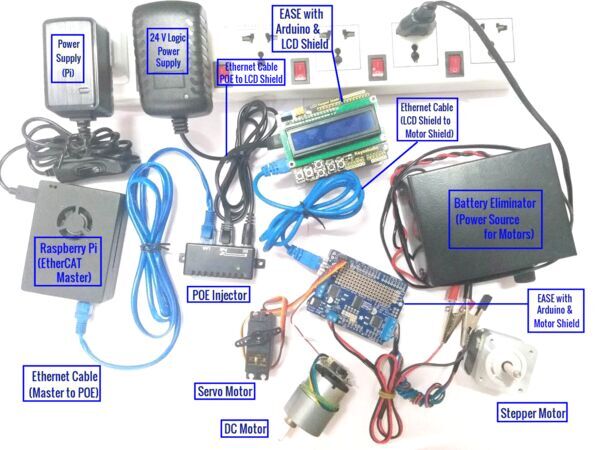
EASE w/ LCD & Motor Shield Using RaspberryPi Master Tutorial
"Use a RaspberryPi master to communicate with 2 EtherCAT Arduino Shield by Esmacat(EASE) on Arduino to control motors using LCD shield input. n this tutorial, you will learn how to set up and use the EtherCAT Arduino Shield by Esmacat (EASE) Slave device on top of an Arduino subsystem and interface it with an LCD and Motor Shield to enable data transfer between the two slave devices via the EtherCAT master (Raspberry Pi). First, some general information about Raspberry Pi and the shields is discussed. After learning to set up the devices, you will learn to implement a practical project involving both the LCD and Motor Shields to control the Motors connected via the buttons on the LCD Shield by exchanging data between the 2 slave devices and the EtherCAT master. The data about the current motor to be controlled and its state (speed/position) is also printed on the terminal of the Pi. EtherCAT Arduino Shield by Esmacat (EASE): EASE is an EtherCAT slave that connects to an EtherCAT master (PC/ Laptop/ Dedicated Master devices like the Esmacat Master S and Esmacat Master C. It can be stacked on top of Arduino, Arduino-like boards and Arduino Shields." [...]
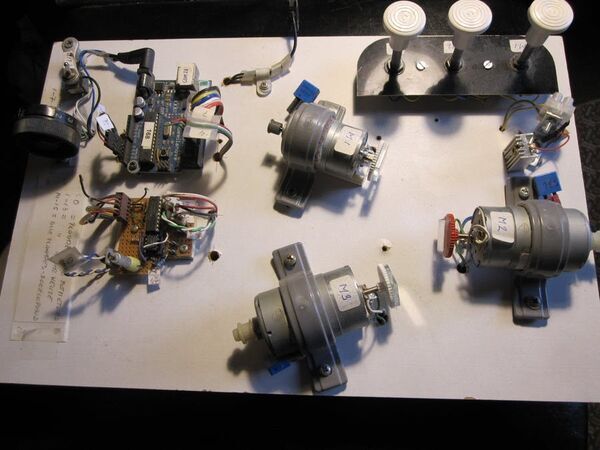
Laserbeam-Figures
"This instruction will show you a simple construction to use a controlled laser beam for projecting nice figures on a wall. What does the system do ? On the shaft of each motor a small mirror is installed. I did it with a plastic gear, and glued the mirror to the gear. Don’t worry about making this so accurate that the mirror is perpendicular to the shaft…… final result even has to be that the mirrors wiggle a little bit. The idea of this construction is to make these figures by giving the 3 motors a specific speed, in order to get these nice figures." [...]

Hot Glue LED Matrix Lamp
"An interesting light display using 64 glue sticks and 128 WS2812B RGB LED strips. This lamp was based on a similar lamp called "Fiber Optic" LED Matrix by jbumstead. Using OpenSCAD, the goal was to replace the 12mm Diffused Digital RGB LED used in jbumstead's design with cheap WS2812B RGB strips and to make the container for the LEDs and electronics as thin as possible allowing cheaper 7mm glue sticks to be used. Printing the Case The only part that requires supports is "Hot Glue Matrix - Bottom.stl". I used a 0.2mm layer height and a 15% infill. I found that by increasing the hole size using a 19/64" drill after printing made it easier to insert the glue sticks into their respective holes." [...]
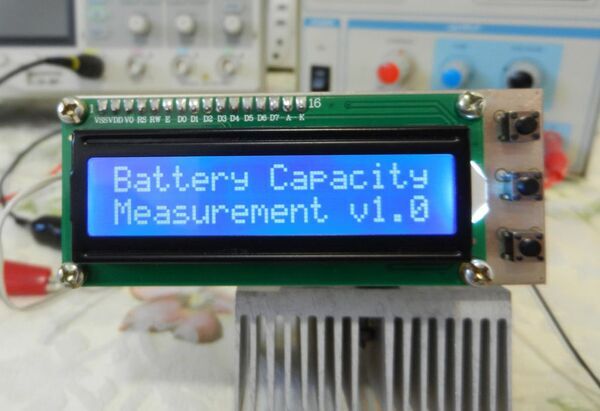
Battery (Lithium, NiMH, NiCd) Capacity Tester Using Arduino
"The increased interest in IoT and electric automobiles around the world is driving an increase in the use of Lithium-Ion/Lithium-Polymer/NiCd/NiMH batteries as more devices and applications are using them, due to their high energy storage capacity to size ratio. This increased interest is, however, causing an increase in the number of batteries with “fake” ampere-hours ratings in the market. These fake ratings could lead to the failure of several projects, especially IoT projects in which developers factor in the Battery ratings in their On-time calculations. As such, to find a way of mitigating the failure-risks this problem poses, for today’s tutorial, we are going to build a battery capacity tester which can be used to get the correct energy storage capacity of any Lithium-Ion/Lithium-Polymer/NiCd/NiMH batteries (with voltage below <5v). There are quite a number of battery testing projects on the internet, each with a different approach, but for today’s tutorial we will be chronicling the efforts of Instructables user: Sam Moshiri, due to the quality of his build and its standalone and compact nature. The goal of the project according to him was to build a compact, easy-to-build device, capable of measuring the capacity of almost any kind of battery (< 5V) using an adjustable constant load setup with an LCD on which the capacity of the battery is displayed." [...]

Face Hitting Machine With Sound Effect - Based on Arduino
"A Face Hitting Machine enables you hit those you dislike on the face, even with uplifting slap sound effect. Your decompression artifact. A Face Hitting Machine enables you hit those you dislike on the face, even with uplifting slap sound effect. Your perfect decompression artifact. Someone annoys you at work? Want to punish a friend who doesn't come to the party?" [...]

A digital quartz clock from scratch
"After 20+ years of programming, I wanted to get some understanding of the electronics that make my career possible. I had built the basic individual logic gates with transistors on a breadboard, but to build anything meaningful I needed loads of them and so I bought a somewhat random collection of logic chips on Amazon which introduced me to the 7400-series and the concept of datasheets. After a few simple projects I wanted to build something more useful: a quartz clock with LED display. No microcontroller A practical way to create a clock would be to hook up 7-segment LED displays to an Arduino or Raspberry Pi and write a few lines of code to drive the displays. For this project however I wanted to use just basic logic gates and no code. " [...]
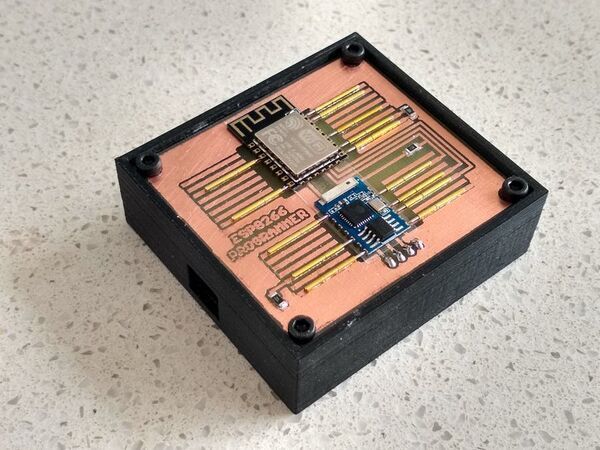
Programmer for ESP-12 & ESP-03 Modules
"This project allows the easy programming of the widely used ESP-12 module and its smaller brother the ESP-03 module. The ESP-12 module is commonly found on WeMos D1 and NodeMCU boards to name a few. Boards like the WeMos provide extra functionality to the ESP-12 module such as a USB to serial converter, a 3.3V regulator and various LEDs to show what state the ESP-12 is in. If your build contains a limited amount of space, you can do away with these "extras" and place the ESP-12 or ESP-03 directly onto your build. By using Pogo pins, these modules can be programmed without any need to solder pin headers etc. Making the PCB The Eagle files have been included should you wish to have your board commercially made or do as I did and make it yourself." [...]

Access Control System - Everything Can Be Configured Via Web
"In this project, make ESP RFID accsess control board with ESP8266 and RC522. Everything Can Be Configured Via Web UI (IoT) Hi everyone in this project we gonna make ESP RFID accsess control board with ESP8266 and RC522. Access control system using a cheap RFID reader and ESP microcontroller. - Minimal effort for setting up your Access Control system - Capable of managing up to 1.000 Users (even more is possible) - Great for Maker Spaces, Labs, Schools, etc - Cheap to build and easy to maintain Minimal effort for setting up your Access Control system, just flash and everything can be configured via Web UI. This control board is great for Makerspace, labs and schools. I made this for my own workshop." [...]

Hacking a Bluetooth Toy Car
"We're learning how to "hack" a bluetooth toy car by building a custom remote for it. using arduino and a gyroscope. In this tutorial we're going to build a custom remote control for the ZenWheels microcar. The ZenWheels microcar is a 5 cm toy car that is controllable through an Android or Iphone application. I'm going to show you how to reverse engineer the Android application to find out about the communication protocol and how you can build a remote control using arduino and a gyroscope. Step 1: Components & Tools Parts: 1." [...]
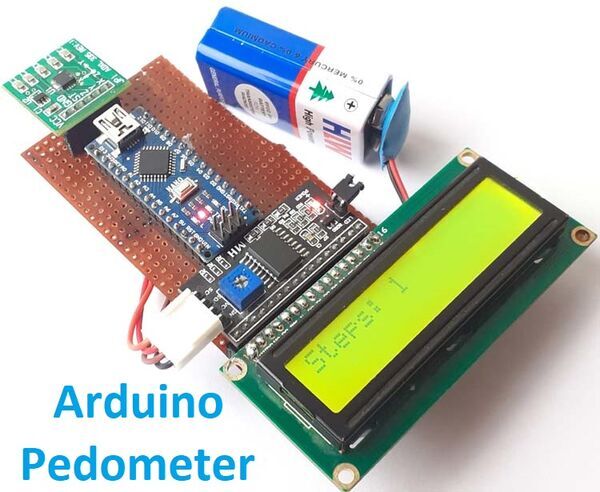
DIY Arduino Pedometer - Counting Steps using Arduino and Accelerometer
"Fitness bands are getting very popular nowadays, which not only counts the footsteps but also tracks your calories burned, display heartbeat rate, showtime and many more. And these IoT devices are synced with the cloud so that you can easily get all the history of your physical activity on a smartphone. We have also built an IoT Based Patient Monitoring System where the critical data have been sent to ThingSpeak to be monitored from anywhere. Pedometers are the devices that only used to count footsteps. So in this tutorial, we are going to build an easy and cheap DIY Pedometer using Arduino and accelerometer. This Pedometer will count the number of footsteps and display them on a 16x2 LCD module." [...]
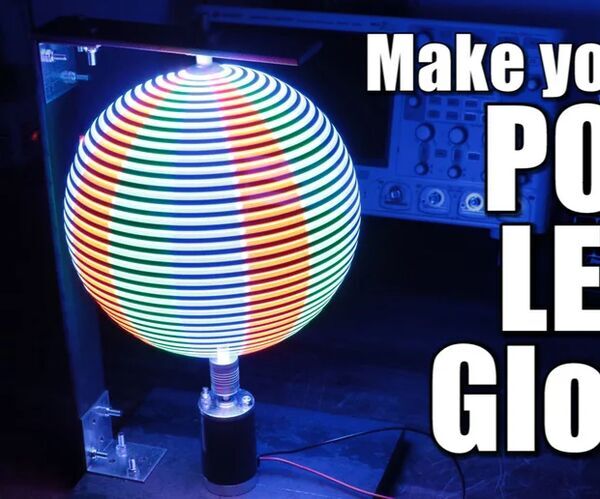
Make Your Own POV LED Globe
"In this project I will show you how I combined a couple steel pieces with an Arduino, an APA102 LED Strip and a Hall effect sensor in order to create a POV (persistence of vision) RGB LED Globe. WIth it you can create all kinds of spherical pictures or even letters which is a definite eyecatcher. Let's get started! " [...]

Automate your life with Node-RED (plus a dash of MQTT)
"For years we’ve seen a trickle of really interesting home automation projects that use the Node-RED package. Each time, the hackers behind these projects have raved about Node-RED and now I’ve joined those ranks as well. This graphic-based coding platform lets you quickly put together useful operations and graphic user interfaces (GUIs), whether you’re the freshest greenhorn or a seasoned veteran. You can use it to switch your internet-connected lights on schedule, or at the touch of a button through a web-app available to any device on your home network. You can use it as an information dashboard for the weather forecast, latest Hackaday articles, bus schedules, or all of them at once. At a glance it abstracts away the complexity of writing Javascript, while also making it simple to dive under hood and use your 1337 haxor skills to add your own code." [...]

ESP8266 - 1+ Year 18650 battery lifetime
"Around 1.5 year ago I started developing small sensors that could be placed around the house measuring temperature and humidity. The first few version did not last very long on their batteries (2xAA), around 1-3 months. So I spend some extra effort reducing average power consumption. It has now been more then a year ago that I placed the first two sensors. Below is the reported battery level over the past year: (there is a slight offset between the readouts, the values are not calibrated). The sensors are build from the following components: ESP12-F or Wemos D1 mini BME280 XC6206 3.3V ldo." [...]

24-Bit Stereo Audio DAC for Raspberry Pi
"24-bit stereo DAC which is specially built for Raspberry Pis. This R-2R DAC delivers the clear audio output with minimum configuration. This project is about 24-bit stereo DAC, which we build for Raspberry Pi boards. This R-2R ladder DAC is developing around Intel / Altera EPM240T100C5N CPLD. We developed this module after review the PT8211 DAC, which we tested a few months ago. Compare with PT8211 DAC, this module is capable to provide high-quality audio output with Raspbian OS." [...]
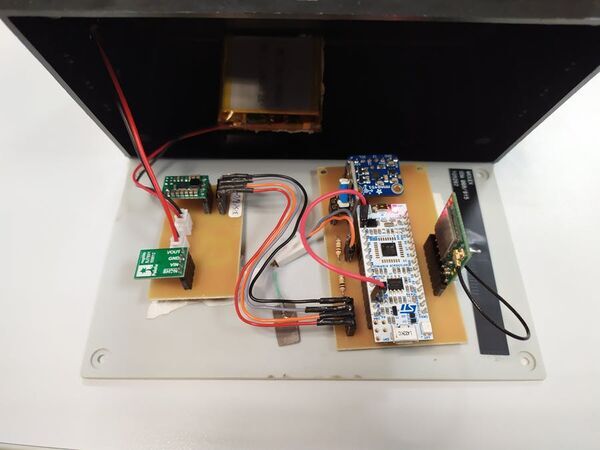
EarthPod
"Earthquake sensor using the Sigfox network. Context The main objective of this project is to develop a device able to detect and characterize earthquakes. Our goal is to send the collected data to a Human Machine Interface on a web application.This exercise is part of the Embedded Systems course at the graduate engineering school, Polytech Sorbonne. The main actors in this project are therefore Mr. Yann Douze, head of the speciality and sponsor of the project, as well as Mr. Julien Thiesson and Mr. Ludovic Bodet, researchers at UMR METIS. These last two provided us with support and expertise throughout the project. Motivations Earthquakes are among the most devastating natural disasters, causing mortality peaks up to 300, 000 people a year." [...]

London Underground Map Clock
"In 2014, off the back of in internship at a 3D printing consultancy in London and an experiment with colour lithophanes using their Stratasys machine, I design my own going away present, a colour 3D print of tube lines local to their offices. I was determined to make something from it. A short 2 years later in 2016 I had my own 3D printer, and set to work making it into a clock. As a kid I though the Tokyo Flash digital watches were the greatest things ever, and deiced that would be the inspiration point for the design. And now it's just been a minor 4 year break till I've gotten round to writing it up! While the exact instructions will be difficult to replicate, and the reduction of cost in hobbyist PCB manufacture in the past couple years might make my exact method for LED placement obsolete." [...]
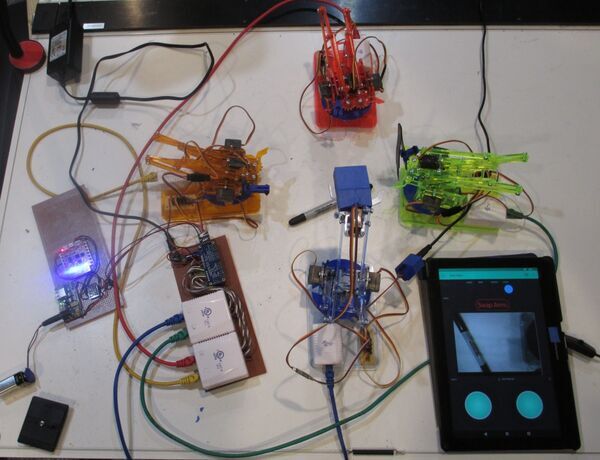
Duh-Vinci Surgical Robot
"There is no good reason for this to exist. There is however a festering reason. A couple of years ago, LVL1 Hackerspace hosted a Hack-a-thon for useless and/or impractical devices. With only 48 hours, this was outside the scope of completion. The idea remained dormant until this year. Parts List: 4 x Me Arm Open Source Robot 1 x Dissection Kit 1 x SparkFun Blynk Board 1 x 4 Line Voltage Level Shifter 1 x ESP32-Cam w/ OV2640 camera 1 x PCA9685 12-bit 16-PWM Servo Controller Board 4 x Cat6 RJ45 Surface Mount Box - 1 Port 2 x Cat6 RJ45 Surface Mount Box - 2 Port 4 x Cat5e Cables (3ft.)" [...]
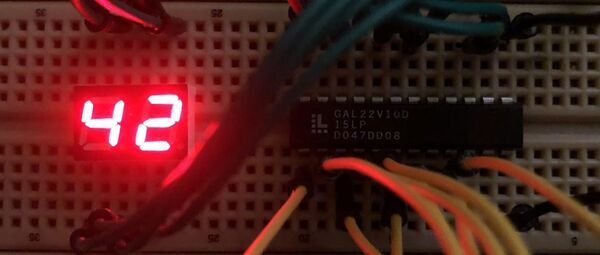
Using GAls in the 21st century
"A long time ago, 7400 logic was all that was available, but having only 7400 logic means designs can get big and difficult, but making a custom logic IC was expensive and hardly a possibility. A few companies started making programmable logic devices like the Programmable Logic Array (PLA) and Programmable Array Logic (PAL). These devices started being available in the 1970’s and where generally one time programmable devices, with the capability to contain a handful of simple logic. Much later, in 1985, the Generic Array Logic (GAL) came into existence, a reprogrammable version of the PAL. Later on the CPLD’s and FPGA’s came and are still used today.When reading about this I discovered there are still GAL’s made and sold, and getting old ones from Ebay is easy enough. They looked like weird odd devices, so I decided to have a closer look, eventually making a dual BCD to 7 segment decoder with them that even handled multiplexing." [...]
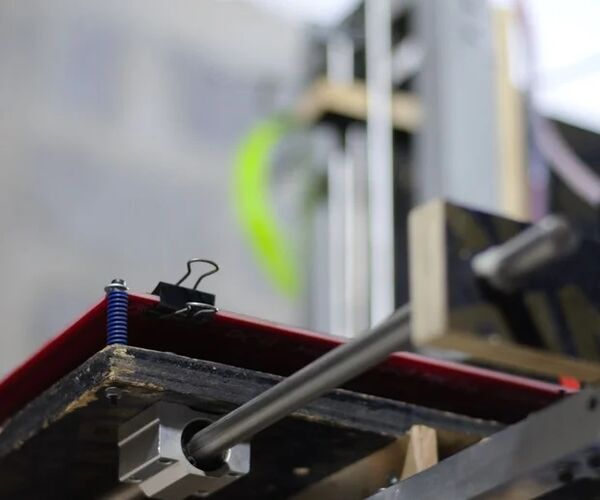
3D Printer HeX V 1.1
"If you are a hobbyist, you would know the importance of 3d Printer. We all know that 3d printer has revolutionized the prototyping industry and now it has started to take over many small manufacturing business too because there is no hassle of heavy machinery and equipment, all you need is a 3d printing farm and you can manufacture any project you desire. From a very simple design to a very complex geometry you can print anything. So in this project, I will show you how I made a 3d printer for myself. I developed my own design as challenge to myself, It gives more excitement to a project, I faced many problems during the development and I have shared them in this instructables. I hope they would be useful for you guys too.You might find a few pictures unclear because I wasn't planing on making a video or instructables on it but I thought why don't I give it a shot." [...]

Hydroponic Grow Box
"My design consists of multiple rows of PVC piping surrounding a central light source. Water is delivered throughout the pipes, which are filled with growing media. It's currently positioned vertically to prevent water from falling out from one side; in a micro gravity environment this is not an issue. Lighting, watering, monitoring, etc. are all automated by an Arduino Nano. " [...]
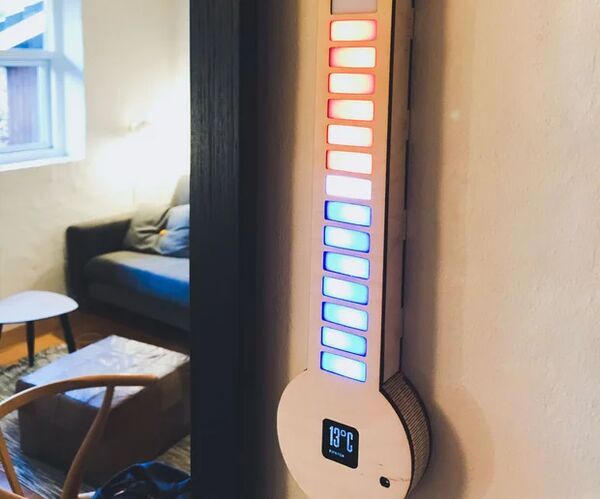
Digital RPi LED Thermometer
"Learn how i made this Digital LED Thermometer, with a Raspberry Pi Zero W, LED strip, an OLED Display, and a custom PCB. It automatically cycles thought a list of cities, and displays the temperature on the OLED display, and the LED's. But you can also manually select a city to display, with the buttons on the side. On top of that, it will shut off the LED's and the OLED, if it's been inactive for a few minutes, and will turn back on, if it detects a significant light change (Controlled by an LDR). Supplies:- A Raspberry Pi Zero W - A 1.5 Inch OLED Module by Waveshare - A 5V 2.4A Power Supply for Raspberry Pi - A 5m WS2812B LED Strip, 30 LEDs/m - Screws, washers, bolts and standoffs. - A Custom PCB, with buttons, a switch, an ldr, pin-headers, and more - Soldering iron and solder - Hot glue - Wood glue - 4mm and 6mm plywood - 3mm white acrylic" [...]
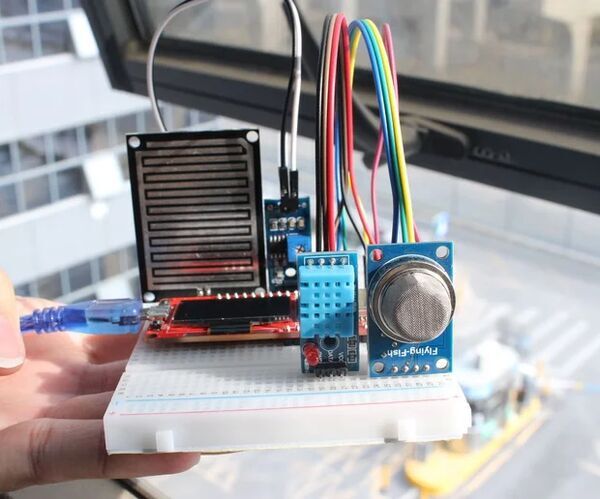
MicroPython ProgramMini Weather Station
"It's winter now, but it still feels a little hot, even though I'm only wearing a T-shirt, which makes me want to know the current temperature, so I use the Micropython ESP32 and DHT11 sensors and a simple weather station so you can get the current temperature and humidity in any browser, now I'll share the process with you. " [...]

Transmit and Receive Morse Code Using Light With Arduino and Smartphone's Camera
"This device allows you to send any message using morse code. (you don't need to know morse code for this projects) In short: you send morse code with ESP8266 or Arduino and receive it with a smartphone's camera. 1. The brain of the project can be Arduino, or ESP8266, ESP32, etc. The code is compatible with all of that. 2." [...]
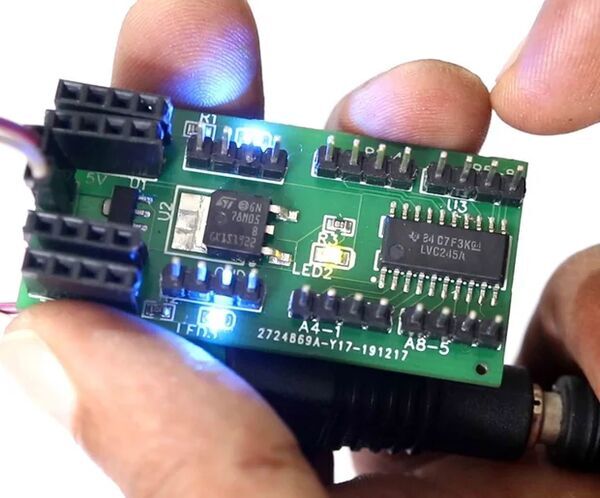
Simple DIY Logic Converter for 3.3V Devices
"In this Post, I will show you how you can make your own 5V to 3.3V logic converter for connecting 5V sensors to new Arduino Boards and Raspberry Pi. Why do we need a Logic Level Converter IC? Most of you love playing with Arduino and Raspberry Pi during free time right? Of Course thats what hobbyists do! Along with Arduino, we will definitely use various sensors such as IR sensor, PIR sensor and Ultrasonic sensor. But the problem is most of todays boards are not 5 V tolerant and almost all of the boards works under 3.3V." [...]
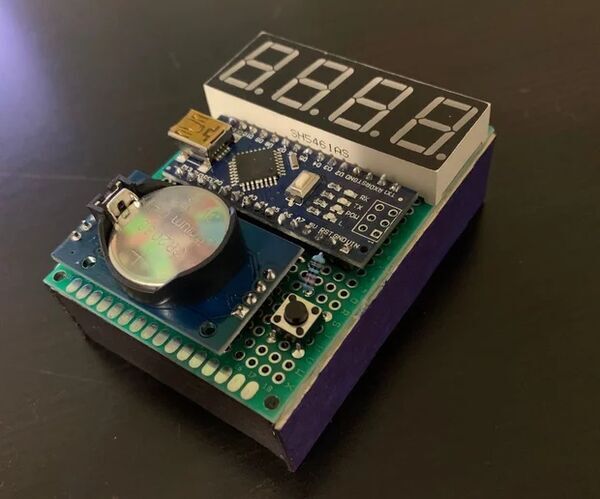
Arduino TOTP Generator
"Inspiration Having a friend with an interest in cryptography and security, I wanted to create the perfect birthday present. *This is a project I made as a birthday present and was created within tight time constraints (pardon the messy workmanship) NOTE: The TOTP generation which is used in this project generates and utilizes 6 digit codes, but due to my current on-hand hardware, I opted to cut the trailing 2 digits and display and utilize 4, arguably (but not greatly) reducing the security. General Information This project generates a new code every 30 seconds using a preshared key and the current time (which is kept track of using the real-time clock module) and displays it on the display when the button is pressed. The most common use case would be two-factor verification based on Time-based One Time Password (TOTP) and HMAC-based One Time Password(HOTP) for authentication. TOTP is an algorithm that computes a one-time password from a shared secret key and the current time. HTOP is an algorithm that uses the HMAC algorithm to generate a one-time password." [...]
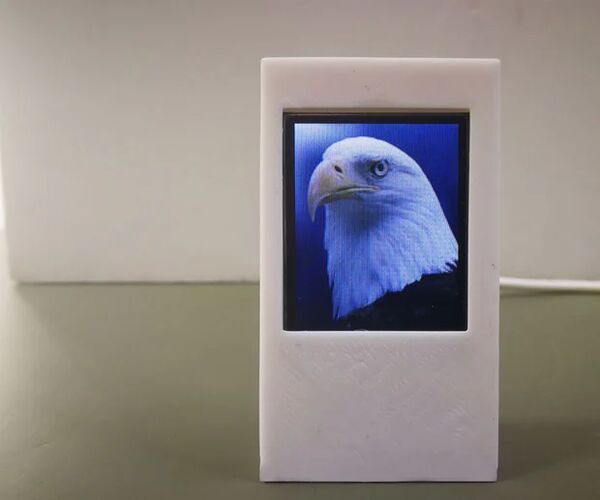
Cheap & Cute PhotoFrame Without SD Card on ESP8266 + 1.8inch TFT
"Digital photo frame are awesome thing to show photos of your family members, friends and your pets. I wanted to build a small, cheap and cute photo frame with the parts already in my hand. This frame use 1.8" Small TFT panel and ESP8266 wireless development environment in a 3D printed case. Supplies: 1.8 TFT Panel ST7735 ESP8266 WEMOS D1 3D Printed Case Some Wires & Soldering Iron. " [...]
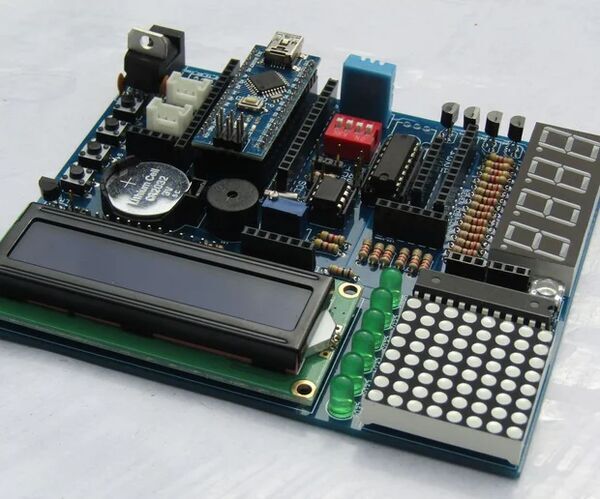
Arduino Learner Kit (Open Source)
"If you are a beginner in Arduino World and going to learn Arduino having some hands-on experience this Instructables and this Kit is for you. This Kit is also a good choice for the teachers who like to teach Arduino to their students in an easy way. If you want to learn Arduino you should include the following topics: Digital Output: Controlling multiple LEDs using Arduino Generating Tone using Buzzer Digital Input: Interfacing button switch using Arduino Interfacing DHT11 Sensor Using Arduino Analog Input: Reading Analog data from a potentiometer Interfacing LM35 temperature sensor using Arduino Analog Output (using PWM): Generating multiple colors using the RGB LED. SPI Communication: Interfacing 74HC595 Shift Registerwith Arduino Interfacing MAX7219CNG with Arduino for driving DOT Matrix display or multiple seven segment display using only 3 pins of Arduino. I2C Communication: Reading date and time from DS1307 real time clock UART Communication: Interfacing GROVE GPS and Bluetooth Module with Arduino Display Interfacing: Driving 16 X 2 Character LCD display using Arduino Multiplexing: Driving multiple seven segment display using a minimum number of Arduino pins. You will be wondering to know that the Kit is designed to experiment with all the above-mentioned topics." [...]

DIY Capacitance Meter
"A capacitance meter is a piece of electronic test equipment used to measure capacitance, mainly of discrete capacitors. Every electronics hobbyist & engineer must have capacitance meter. A capacitance meter is not very cheap one. In this instructables I will show you how you can make a very simple but accurate capacitance meter in a very low price using gearbest.com's High Precision Digital Capacitance Meter Kit. It is a low price DIY kit and required basic soldering skill to complete it. ATmega48 chip is used to make it." [...]

Arduino Based Flute Player Machine
"In this instructable, I am trying to present a project that combines art with engineering. A machine that plays the flute. It controls notes using Arduino. Various tune or song can be programmed on Arduino, which Arduino plays on flute. There is no limit to use the Arduino controls that plays the flute. I tried the following ways to use it to play music: Simply coding the song and playing it, Playing tones using a Random function." [...]
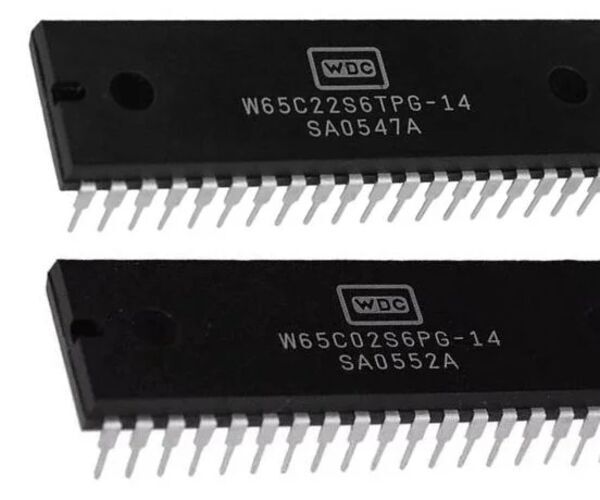
6502 & 6522 Minimal Computer (with Arduino MEGA)
"Following on from my previous Instructable, I have now put the 6502 on to a strip board and added a 6522 Versatile Interface Adapter (VIA). Again, I am using a WDC version of the 6522, as it is a perfect match for their 6502. Not only do these new chips use much less power than the original MOS versions, but they can be run at slower speeds or even stepped through a program without any problems. The Arduino program was originally written by Ben Eater (who has many videos on YouTube) and has been modified by me to achieve this result. Supplies: 1 x WDC W65C02 Processor 1 x WDC W65C22 Versatile Interface Adapter 1 x 74HC00N IC (Quad 2-input NAND gate) or similar 1 x 10cm wide (35 line) Strip board 2 x 40 pin DIL sockets 1 x 14 pin DIL socket PCB Header Pins 2.54mm PCB Header Sockets 2.54mm 1 x 12mm Momentary Tactile Push Button Switch PCB Mounted SPST or similar 1 x 1K resistor 1 x 3K3 resistor 2 x 0.1 uF ceramic capacitors 1 x 8 Way Water Light Marquee 5mm red LED Various coloured wire for connections 8 male - male link wires" [...]

Moog Style Synth
"First and foremost, I have to give a massive shout out to Pete McBennett who designed this awesome circuit. When I came across it on YouTube I couldn't believe the sound that he managed to get out of a handful of components. The synth has a MASSIVE sound and really growls with heavy bass through a good speaker. The synth is a pulse width modulated oscillator, routed through a light-controlled resonant low pass filter. The "growling" oscillator tonality is supplied via a PWM and a awesome high-resonance low pass filter. The light-control aspect which is controlled through 2 Light dependent resistors (LDR), gives amazing musical expression." [...]

Secure DIY Garage Door Opener
"If you'd like to increase the security of your garage door, or you are just interested in learning more about cryptography, then read on! At its core, this project is simply about a secure wireless button. This could be used to trigger any number of things, so we hope it can inspire message security on many other future projects. I was surprized to learn that even if your garage door is fairly new, then you may still be vulnerable to man-in-the-middle or roll-jam attacks. With this tutorial, you can achieve an extremely high level of security utilizing ECC signatures and the SparkFun Cryptographic Co-processor. If you'd like to read more about garage doors, here are two great articles about hacking and history." [...]
That's all Folks!



